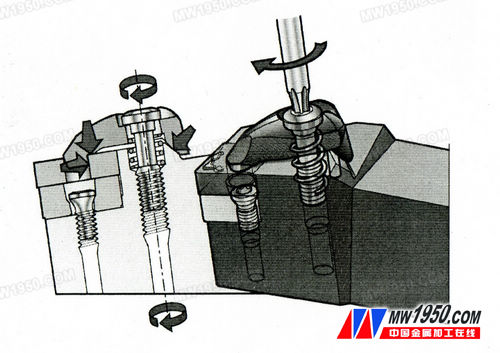Structural features of efficient turning tools Turning tools are the most widely used tools in the metalworking industry. With the advancement of science and technology and the development of production situation, the structure of the turning tool has gradually evolved from the original high-speed steel structure with the development of tool materials to hard alloy welded and hard alloy mechanical clamping and hard to achieve high production efficiency. The alloy can be indexed. Among the four tool configurations, the carbide indexable structure is the direction of tool development and application. It has high efficiency (mainly due to the high hardness and high thermosetting properties of cemented carbide), high durability, high precision and stable chip breaking (this is especially important for applications in CNC machine tools, automatic machine tools, machining centers) and Achieve low-cost cutting (which can reduce the number of tools, variety, tool life and process aid shortening), so the current large and medium-sized factories at home and abroad, the application of the carbide indexing structure of the turning tool has reached More than 80%. Originally purchased in the general factory, there are two types of outsourcing, self-design and manufacturing. The requirements for the structure of the machine-clampable turning tool are also relatively simple. When designing, manufacturing and using the tool, it is mainly required to achieve reliable clamping. Easy to manufacture and easy to use. However, with the advent of CNC machine tools and their extensive use, in order to achieve high-efficiency, high-quality machining, the tool structure has higher and stricter requirements. For the carbide indexable turning tool, its structural characteristics There are mainly the following aspects: 1, high precision In order to ensure the processing quality of the parts, the repeating precision of the insert blades of the indexable turning tool should have strict requirements, especially for the manufacture of the cutter sipe to ensure the manufacturing precision and roughness. 2. High hardness In order to adapt to high speed, large feed, large depth cutting, and to improve the seismic resistance and durability of the tool, the blade material should not be made of ordinary medium carbon steel, but alloy steel (alloy tool steel) should be selected and heat treated. 3. Reliable clamping mechanism In order to ensure that the blade is not displaced during the use of the tool and can be stably and normally cut, the selected clamping mechanism must be proven to have sufficient clamping force and is stable and reliable. If necessary, a double clamping mechanism can also be used. For example, when the cutter blade is clamped by the eccentric pin, it can also be clamped by the pressure plate; at present, the D-series tools commonly used in the domestic market are mainly made by “Shandong†and “Mitsubishiâ€, and the domestic “Strain Hard Diamond†is produced. D series tools have basically reached the level of similar foreign tools. A typical double rigid clamping mechanism is shown in Figure 1. Camlock Type C,Plastic Camlock Coupling,1/2 Inch Camlock C,2 Camlock Coupler Type C Cixi Chengtuo Hardware Parts Factory , https://www.ibccoupling.com